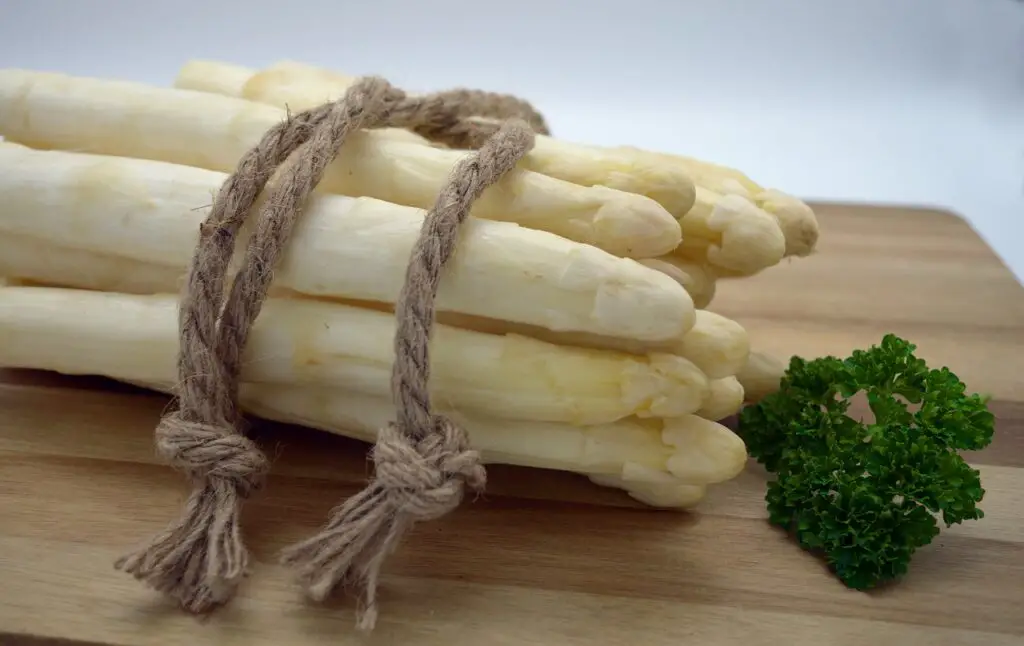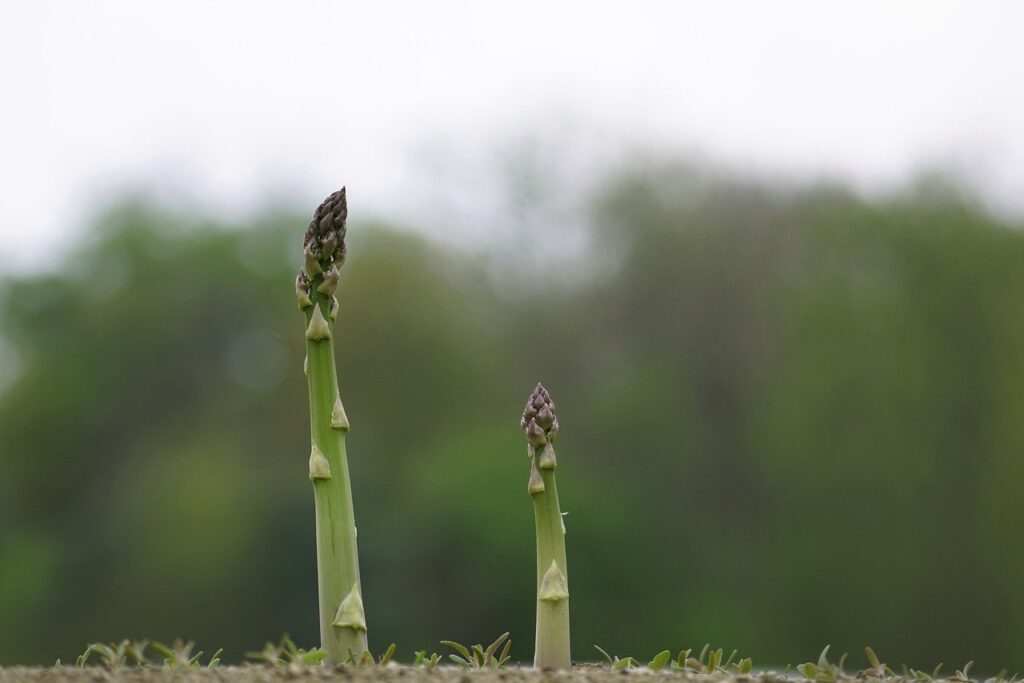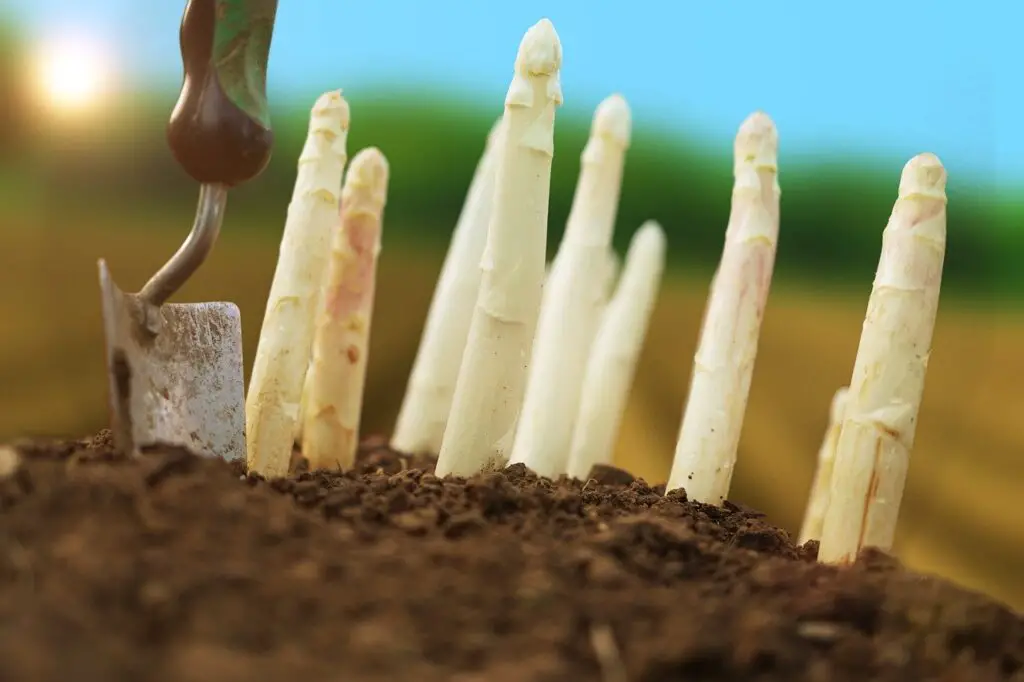Many gardeners wish for a plant that can live longer and can be easy to be taken care of. A delicacy for eating, and a good show in the garden. If you also desire so and have a passion for gardening, then you need to learn how to grow white asparagus from seeds.
White Asparagus

This is a vegetable, but also a delight to grow in a garden. It was started in Germany. But now this can be grown in many different areas around the world. Its history goes back to Egypt and it has also been used as medicine for centuries.
Asparagus literally means shoot. It grows like a shoot, which is used for edible purposes. This plant is widely treated as a delicacy to eat. The shoots grow from long-lasting stems, which are also known as crowns. It has separate male and female plants.
It lives longer. With good weather and temperature, along with proper care taken, this plant can last for 15 to 25 years. This plant takes time to grow fully and produce the desired results. So, you have to be extremely patient and have a passion to grow them in your garden.
Can you eat raw white asparagus?
Asparagus is a good delicacy, which is quite preferred in the European region. You can cook it or take it raw also. It is an early spring vegetable, with quite a good taste. Asparagus contains a lot of minerals along with vitamin C and vitamin A. It has a better taste when grown at home.
The color of this asparagus is white. It is simply grown by making the spears of the asparagus avoid the light. When they avoid light, their colors turn white, this is done by covering the spears using mounds of soil, mulching, or black plastic bags.
Varieties of Asparagus
There are some known varieties of asparagus. The first is the standard one. Which is quite common and found almost all over the world now. There are more hybrid varieties of asparagus like Jersey Giant, which is not only good at production but also has good resistance to diseases.
The female plant may produce small red, berry-like fruits which can usually act as weeds in the garden. A new variety of purple asparagus with large spears and green flesh is also available for home gardening. It is also known for resistance to diseases and for growth.
Growing White Asparagus from Seeds
Can I grow white asparagus?
Growing asparagus is not a very difficult task but it requires patience only. It is easy to maintain and to take care of. But as mentioned earlier, it just takes time. This is a long-term investment. You have to be patient enough to ripe the final fruit.
So, once decided it takes not much effort but a commitment. But when a person is a passionate and committed gardener like you, it is as easy as you think.
Site Selection for Planting Asparagus
Where can you grow white asparagus?
Site selection is quite a care-demanding and important step in the process of planting Asparagus. It is important to note that this plant is going to stay in its place for a longer period of time. So, choose the place wisely. It needs full sunlight, along with well-drained light soil.
As this plant grows up in a vertical way, a good spot for it can be anyplace near the fence of the garden. It will act as a fence along with occupying the right space along with the fence.
Soil Preparation for plating Asparagus
Before planting the seeds of the asparagus, make sure that the soil is good to go. There are no weeds in the soil and the soil is well-drained. When the fall is late, go for the mixture of organic composted matter. Mixing the soil with organic matter would provide it with enough nutrients.
Along with ensuring the required minerals, make sure that the pH of the soil is neutral or high. Asparagus grows well in the soil with a minimum pH level of 6.
Planting the White Asparagus

As we know asparagus is grown from the crowns. But one might think, where does the crown come from? First of all, the seeds of asparagus are grown in peat pots or cups. Then the crown is grown and these crowns are transplanted into the actual bed where we are going to cultivate the asparagus.
Actually, growing from seeds would take almost a year to germinate and make a crown. So, when transplanting the crown to the beds, make the furrows 4 inches wide and 11 inches deep. Keep a distance of 4 to 6 feet between the furrows. Sow them according to size to get uniform spears.
Inside the furrows the distance is important. Keep the distance of 8 to 12 inches inside the furrows. Too much closeness can cause lesser growth in spears. As the shoots from the crown grow, cover them with a little soil during the season.
Take care of the plant when it becomes equal to the level of the ground. It will take a time of two or three years to grow into the full bed of asparagus. When the growing conditions are good spears arise from the crown, and they can be your edible supplies. If not harvested they turn into stalks, acting as energy reserves for the crowns.
Watering the Asparagus Plants
Asparagus needs deep and enough watering because they are sown deep in the soil. Keep the soil moist before sowing.
Water once and wait for the time until the upper layer of the soil is completely dry. Actually, the roots of the asparagus can go very deep when they are provided with enough moisture.
Actually, the watering schedule also depends on the type of soil where the asparagus is being sown and grown. If the soil is light and loose then it doesn’t need much watering. If the soil is heavy, then it needs watering to keep growing steadily.
Fertilizing the Asparagus Plants
These plants usually need nitrogen, phosphate, and potassium. Add these fertilizers, 0.25 pounds in the 20 feet area of the bed before the sowing of crowns in the bed. Add the fertilizers around 2 pounds for a 20 feet area of bed before the growth period of crowns.
After the harvesting is done, add about 2.5 pounds of fertilizers in the 20 feet area of the bed. When available use only nitrogen in the beds after harvesting is done.
Insects and Diseases
The most common and dangerous insect for asparagus is asparagus beetles. They are very harsh. They can destroy the plants. If you see them, remove them by hand or spray the insecticide.
While there are no such other diseases for asparagus. It may face problems like rot etc. that can be adjusted with changes in chemical composition and the level of moisture in the soils. Otherwise, we are good to go.
Care of Asparagus
Asparagus are poor at controlling weeds by themselves. You have to take the weeds off, especially for the first 1 or 2 years. Also, take care that these weeds don’t affect the spears of the asparagus plants.
After the end of the harvest season of asparagus, you should add fertilizers to the beds. And then till the beds are around three inches deep. So, when it is tilled three inches deep, the fertilizer will get mixed, and the weeds will be gone too.
Simple other care involves keeping the soil moist enough and providing direct sunlight available for the plants. This will make sure that there is a steady growth of plants going on.
Harvesting of Asparagus

Harvest the asparagus with full care. Because during harvesting you might cause some damage to the plant. Don’t harvest the asparagus for almost the first two years. This will help the crown to grow and store enough energy reserves to grow more spears in the future.
Harvest the asparagus for almost eight weeks. Spears with open heads are too mature to use. Harvest the asparagus with care. Cut the spears of the asparagus from the level of the ground. It is recommended to use a sharp knife and cut them inside the ground level.
Asparagus is also a good companion plant in the garden. But you have to choose the plants to make them companions of. Keeping in mind the use of pesticides, and fertilizers for the asparagus and for the other plants also. Tomatoes are good companions of asparagus, as they both repel the attacking insects.
So, the plantation and growth of the white asparagus have to be done in such a beautiful, but patient way. If you want this plant then come this way. This not only gives a sense of hard work, achievement, and love for gardening but also tests the true passion for gardening.
So, if you are passionate enough about gardening, prove it and get the long-lasting result of white asparagus.
You may like
How to Plant Dragon’s Blood Sedum
References
https://homeguides.sfgate.com/grow-white-asparagus-63563.html
https://www.gardeningknowhow.com/edible/vegetables/asparagus/white-asparagus.htm

